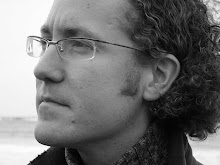As mentioned in my last post, David Bordwell asked me to write a guest post on his much read blog.
Skip over to davidbordwell.net to see my overview of how recording eye movements during film viewing can inform our understanding of how we watch and make sense of films. As an example I analysed a sequence from PT Anderson's
There Will Be Blood and visualised the gaze data using tools created as part of the
Dynamic Images and Eye Movements (DIEM) project. To give you a sneak preview, here is a "peekthrough heatmap" made from the gaze data of 11 viewers.
Details about how this was created and what it tells us can be found on the
blog post.
There Will Be Blood + eye movement peekthrough from TheDIEMProject on Vimeo.

1 comment:
Interesting research. I wonder though your choice of this heatmap type of visualization where you obscure the parts of the image that subjects are not looking at. Since I cannot see them, I cannot compare and visualize the differences between the kind of things and actions that attract the attention of the viewers versus the ones that don't.
But I have to say that your visualization with black for the background, offers a nice way of illustrating an ongoing debate in the neuroscience (and philosophy) of visual consciousness. Some people, like the researcher Stanislav Dehaene in France, believe that what is in phenomenal consciousness at any given moment in time, is just what you are attending to, i.e. the heat pick in your image. They claim that for the rest of the visual field, well you simply don't phenomenally perceive it at all. You can think of your visualization with black background as a good illustration of that. It is somehow counter intuitive to think that this is the case, since we don't experience phenomenal vision like that (few things illuminated and the rest black or non existant). Dehaene and colleagues will say that this is because your final perception is the 'integration' of many snapshots like these and not the perception of a single snapshot. So for Dehaene you get the illusion that you are having a phenomenal experience of the whole visual field, when in fact you are phenomenally experiencing a little portion of it at any given moment in time, only what is the focus of attention.
Other researchers, like Victor Lamme in The Netherlands, believe that we phenomenally experience much more than what is in the focus of attention, even when you analyze a single snapshot. In this view, phenomenal consciousness fall off gradually to the periphery of attention, so you still have a sensory representation of the periphery of the visual field at any given moment in time. So in terms of how you will experience the snapshot, well you don't see that portion of the visual field as non existent or black, but as constituted by shapes and colors, though with much less sharpness and color resolution compared to what is at the center of attention.
Post a Comment